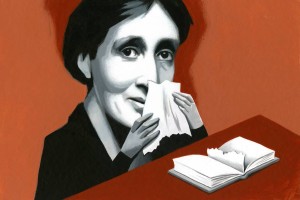WSJ Historically Speaking: The World-Changing Power of the Flu
Getting a flu vaccine is a dreary annual chore, made worse by the fact that the serum often doesn’t work against the current strain of the virus. But good news seems to be on the horizon. Scientists now report that they have successfully adjusted a viral protein to teach immune systems to fight groups of viruses—an important step toward creating a universal vaccine.
The breakthrough is long overdue. The flu is an ancient disease—at least 2,000 years old—and one of the deadliest, with 10 pandemics in just the past three centuries.
Such is the flu’s power that it should be added to the list of history-altering diseases like typhoid, malaria and smallpox. The first wiped out almost a third of the Athenian population in 430 B.C., a year into the Peloponnesian War against the Spartans. Sixteen hundred years later, in 1167, a malaria-like epidemic forced the Holy Roman Emperor Frederick I to abandon Rome and retreat with his army to Germany.
Finally, during the Franco-Prussian war of 1871, smallpox had a starring role in its own morality tale. The French authorities failed to inoculate their soldiers. As a consequence, 125,000 of them contracted the disease, while the victorious (and vaccinated) Prussians suffered only 8,463 cases.
Yet the flu is rarely taken seriously. The problem, according to Virginia Woolf in her essay “On Being Ill,” is that the flu is far too prosaic an illness to be taken seriously, in real life or in literature: “Novels, one would have thought, would have been devoted to influenza…but no.” Heroines never succumb to the flu: Mimi in “La Bohème” dies of tuberculosis, Emily Brontë’s Cathy in “Wuthering Heights” in childbirth, Émile Zola’s Nana of smallpox.
As for inspiring great poetry, it is hard to say which is the more annoying: “Ring Around the Rosie,” a ditty thought to be about the Great Plague of 1665, or “I had a little bird / its name was Enza. / I opened up the window / and in-flew-Enza,” which became popular during the 1918-19 Spanish Flu pandemic.
That year alone, influenza is estimated to have taken more than 50 million lives—more than during the Black Death in Europe (1347-51), whose toll is generally put at 25 million. The effects of Spanish Flu were so crushing that American life expectancy in 1918 dropped by 12 years.
If the flu had attacked the U.S. at the beginning of World War I instead of at the end, the course of the war might have been very different. As it was, 40% of the U.S. Navy and 26% of the Army were incapacitated by the disease in 1918.
It even played an extended role in the negotiations of the Treaty of Versailles in 1919. President Woodrow Wilson, struck down by flu in the middle of talks, became too ill to defend his Fourteen Points blueprint for world peace. His absence allowed more vengeful arguments to prevail, which helped to pave the way for World War II.
The flu may not be exciting, as Virginia Woolf complained. But it can still be devastating. Be prudent. Get vaccinated.

